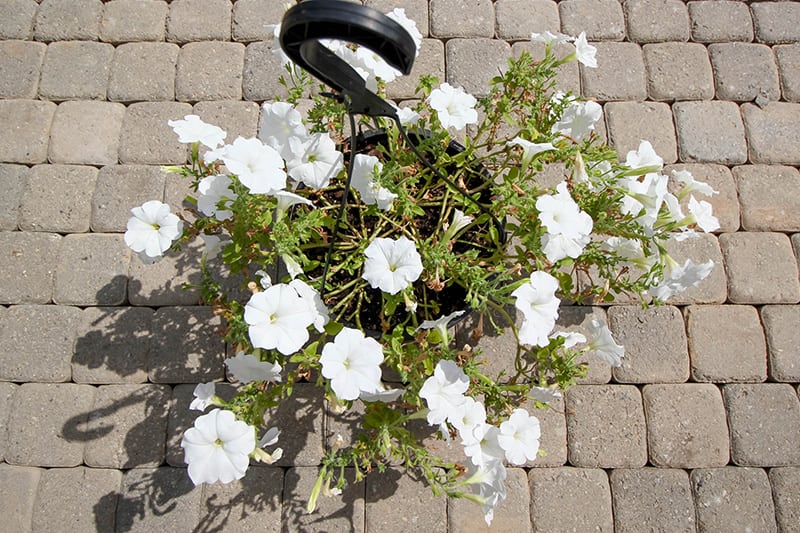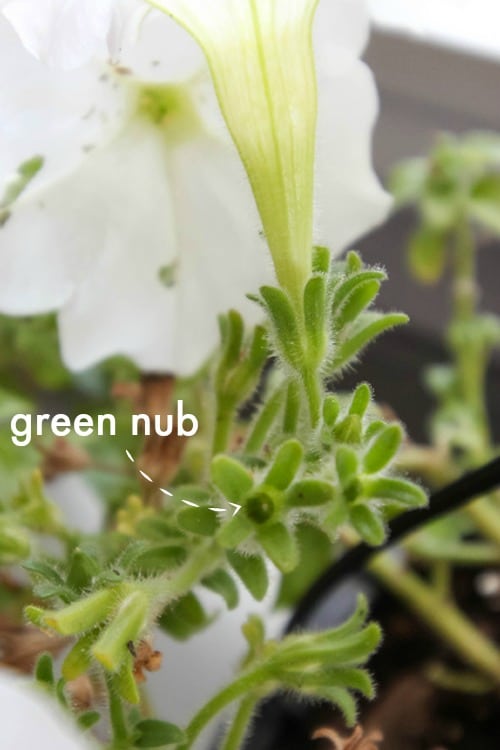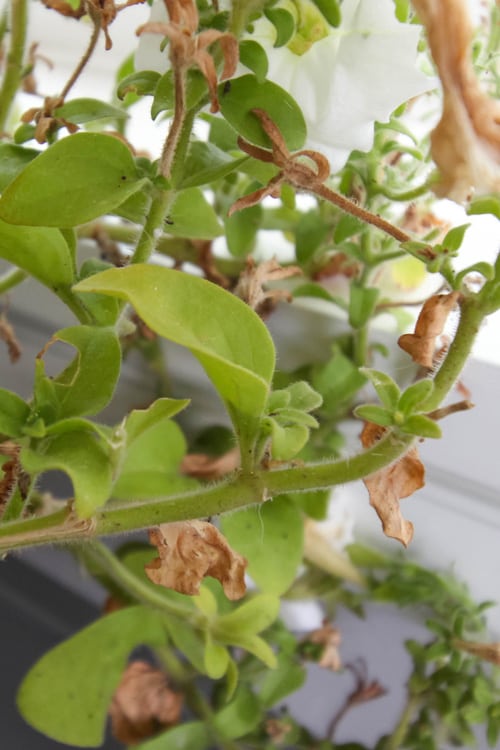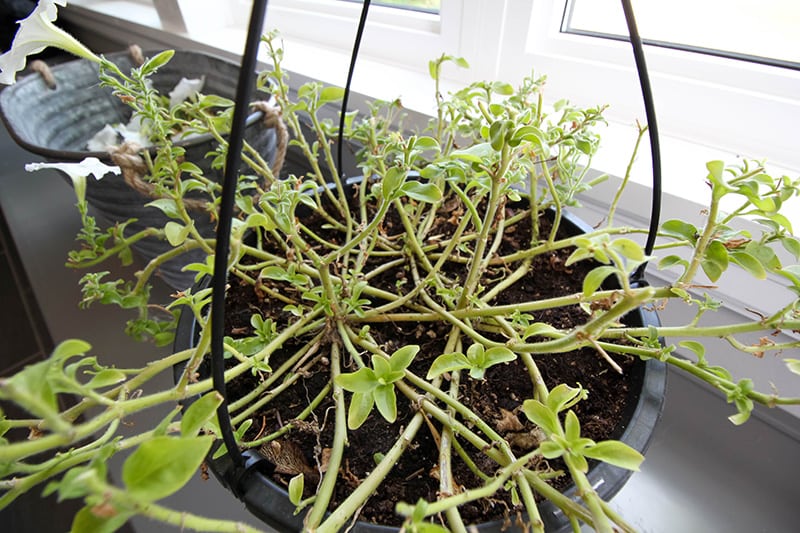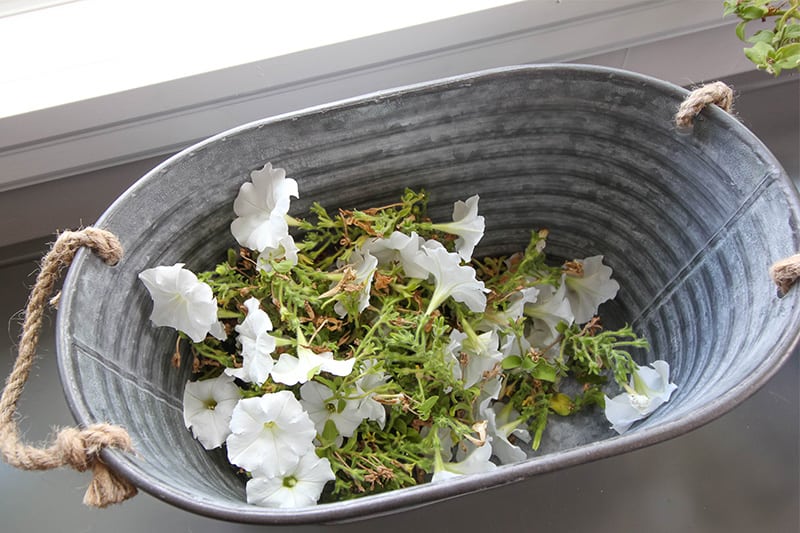Petunias can be some of the most eye-catching summer flowers, but they can also start to look a little sad as the season wears on. Today I’m sharing what to do to fix leggy petunias so they’ll look full and beautiful all summer long!
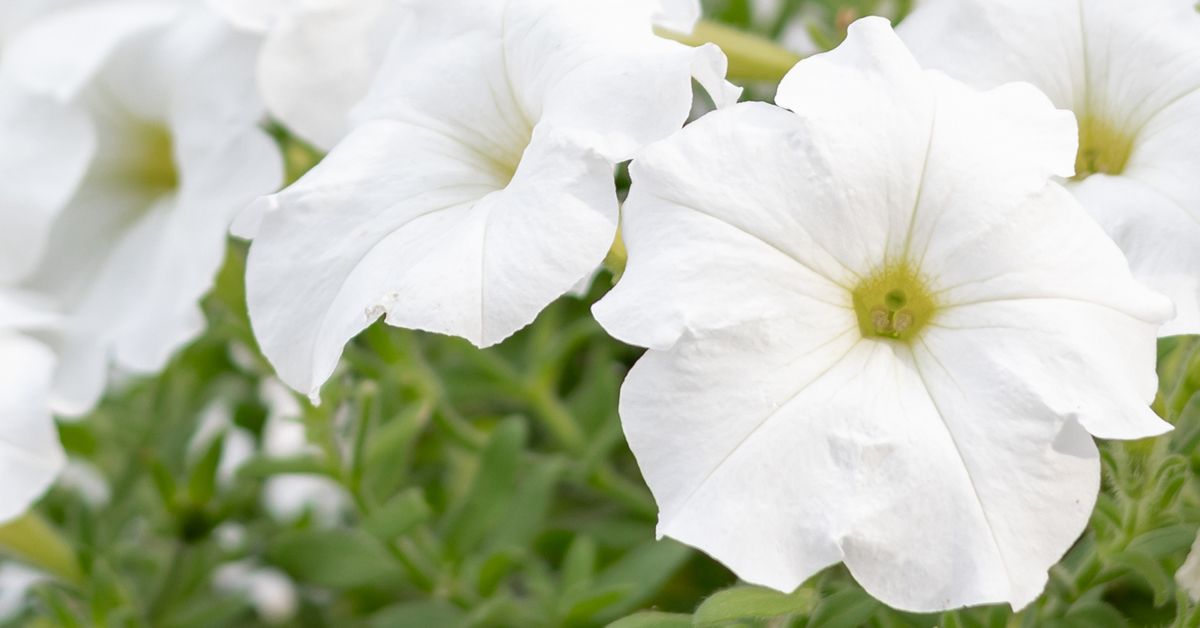
I’ve definitely had some good years for my petunias some bad ones. Sometimes they seem to stay full and beautiful all on their own, and some years I end up with some really scraggly petunias within just a few weeks. I had one particular type that I just couldn’t keep up with a couple of years ago and they made me almost swear off petunias completely because they looked so disastrous, but luckily I’ve learned that it’s not the petunias, it’s me. 🙂 Turns out my petunias just need a proper pruning and for me to learn how to grow them with a little more care. Here’s how to fix leggy petunias and make them look fuller if yours are looking a little sad this summer.
Reasons to Love Petunias
First of all, here are my petunias that I’ve been kind of neglecting for the past few weeks in anticipation of this post. It’s pretty common for petunias to go from being lush and full in the late-spring, to looking something like the photo below by midsummer. Late-summer petunias often just get tossed in the trash because gardeners believe there’s nothing that can be done to save them at that point, but they still have so much potential and can last all the way until first frost or beyond.
Petunias are a popular, easy-to-grow flowering annual plant with large flowers that you often see tucked into a hanging basket, in window boxes or used as bedding plants to brighten empty spots in a foundation garden. As a gardener, there are a few different main varieties that you should know about so you can decide which one is best for your garden. “Grandiflora” and “Multiflora” are the traditional varieties that grow in a more controlled upright mound shape, They work well in paired with other plants in landscaping and add a fast growing pop of color anywhere with ample sunlight. Wave petunias like “tidal-wave” and “shock-wave” varieties have also become very well-loved garden plants, and their vigorous spreading and trailing habbit makes them ideal for container gardens as well.
All petunia varieties provide an abundance of blooms for your garden when they’re healthy and happy and this is why they’re one of the most popular ornamental plants that you see in the early spring at the garden centre when everyone is buying their annuals. They come in many colors and thrive during the summer heat as container plants on a patio or in a flower bed and they’re generally quite tolerant of garden pests. If you go out to the flower garden at some point in the summer and find yourself saying “my petunias look terrible” though, read on to find out how to make them full and beautiful once again.
Tips to Help You Fix Leggy Petunias
Lots of Water
It’s no coincidence that my best petunia years have been the years where we’ve had a ton of rain. I’ve actually never really had to develop great plant-watering routines because my plants have always mostly been watered naturally by the rain. Every once in awhile, like this year, we’ll have a dry spell and these are really the beginning of the end for my beautiful petunias. Although I’ve done a pretty great job of keeping up with watering my gardens overall – if I do say so myself – it’s just not enough for the petunias if you have an extended drought. During these really hot and dry spells, petunias in containers may actually need to be watered more than every day. Twice a day is probably what you’re looking at for best results. Although they love heat and sun, petunias aren’t particularly drought tolerant. Be sure to keep your garden soil moist and provide proper drainage for petunias in containers to avoid root-rot.
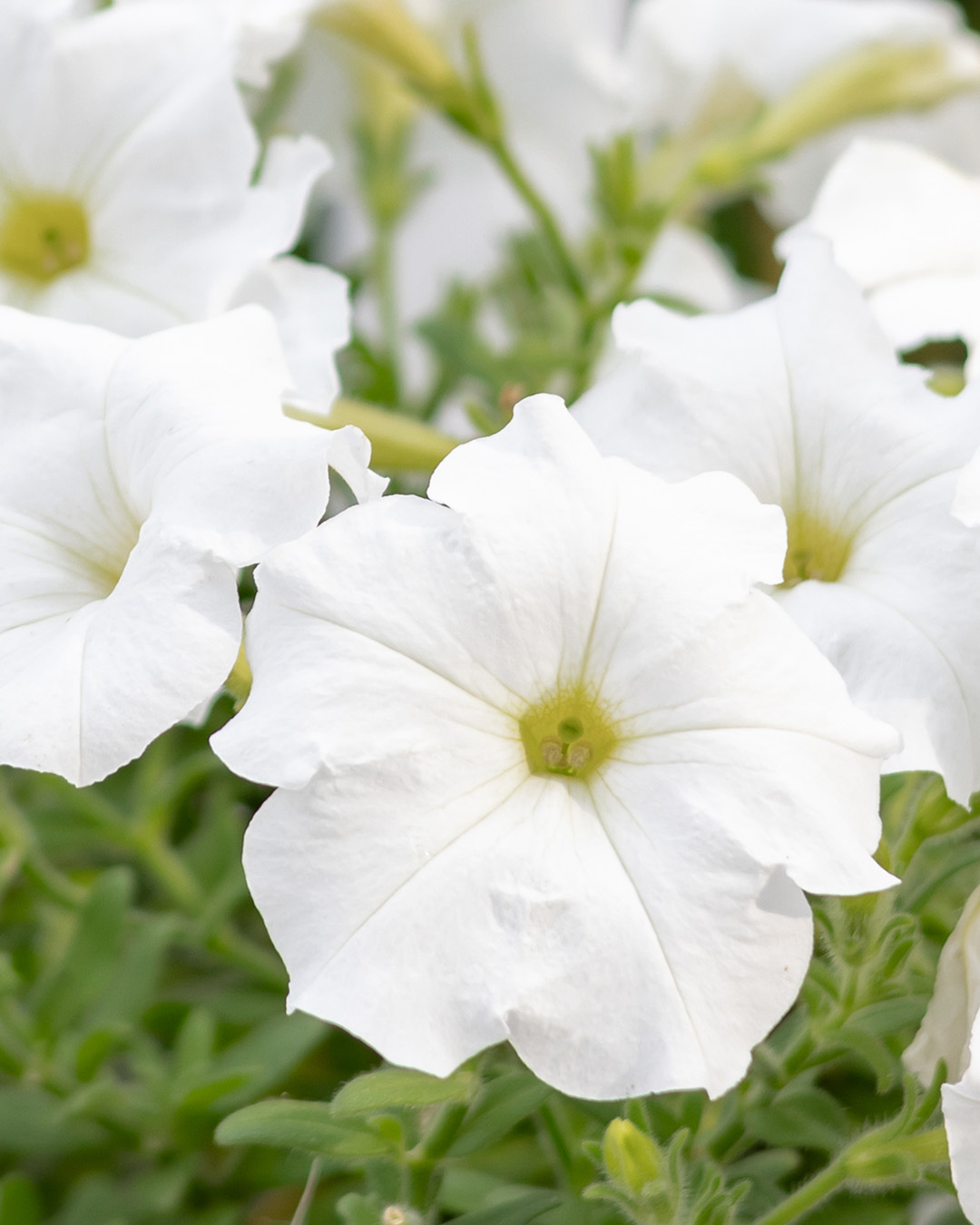
Feeding Schedule
As with most abundant bloomers, petunias can be heavy eaters and like if you fertilize them with a basic all-purpose plant food about once every 1-2 weeks to increase the number of blooms as well as to help your plant recover with new growth after a heavy pruning if that becomes necessary. Liquid fertilizer or a basic water soluble plant food will do the trick.
Deadheading
A lot of annuals need regular deadheading during the summer to look their best and petunias are probably one of the most needy of the bunch when it comes to deadheading. If you’re looking to really fix leggy petunias though, and make them look more full, simply removing the spent blooms isn’t going to cut it. Here you can see a spent bloom next to a new bud that’s about to bloom any second now.
To properly deadhead a petunia, you also need to remove the entire seed pod from the plant. This is the tiny little green nub that remains after you remove a spent bloom.
As the seed pods get a little bit older, they’ll start to turn brown, so look for the brown nubs as well. The whole stem below the little nub will turn brown as well and you can just clip that whole section off. The nubs, stem, and foliage don’t come off as easily as the spent flowers do, so grab a pair of garden shears to make the job easier and cleaner.
More mid-season flower care from: The Creek Line House – How to Revive a Hydrangea
Pruning
One thing that I didn’t realize early on in my petunias struggles is that petunias actually need regular pruning to remain full and more compact. If you don’t prune your petunias, you’ll often end up with long, empty stems with a flower or two at the very end, AKA leggy petunias. 🙂
You’ll want to prune your petunias every few weeks, removing the top 1/4-1/2 of each stem of your plant. This can feel a little tough to do, especially when everything is in full bloom, so feel free to prune just a few of the longest stems one week, and a few others the next week. That way you’ll have some stems in full bloom and others that are regenerating themselves at all times.
When you go to prune your petunias, try to leave at least a few leaves on each stem, and trim just above a “node”, which is the spot where a pair of leaves meet the stem.
As you can see, I removed quite a bit, but I’m left with a really healthy looking little plant full of fresh new leaves and very little of the crispy brown leaves and stems that were covering the old plant and making it look so sad.
Here’s everything I removed.
And here’s the little friend that came along to watch. 🙂
Follow Up Steps to Fix Leggy Petunias
After you’ve completed your pruning steps for making your petunias fuller, things should start to look pretty great within a couple of weeks. You’ll want to keep up with your new watering schedule on an ongoing basis if your weather is really hot and dry and make sure you’re deadheading correctly at least every 3 days. When you start to see a few long, lanky stems getting out of control again, it’s time to start pruning!
Pictured below is an example of some petunias that I maintained well throughout the season and pruned back regularly. This is how they looked just after I pruned a few stems back. Still full and happy with a few empty spots ready to fill in within a day or two as new blooms develop.
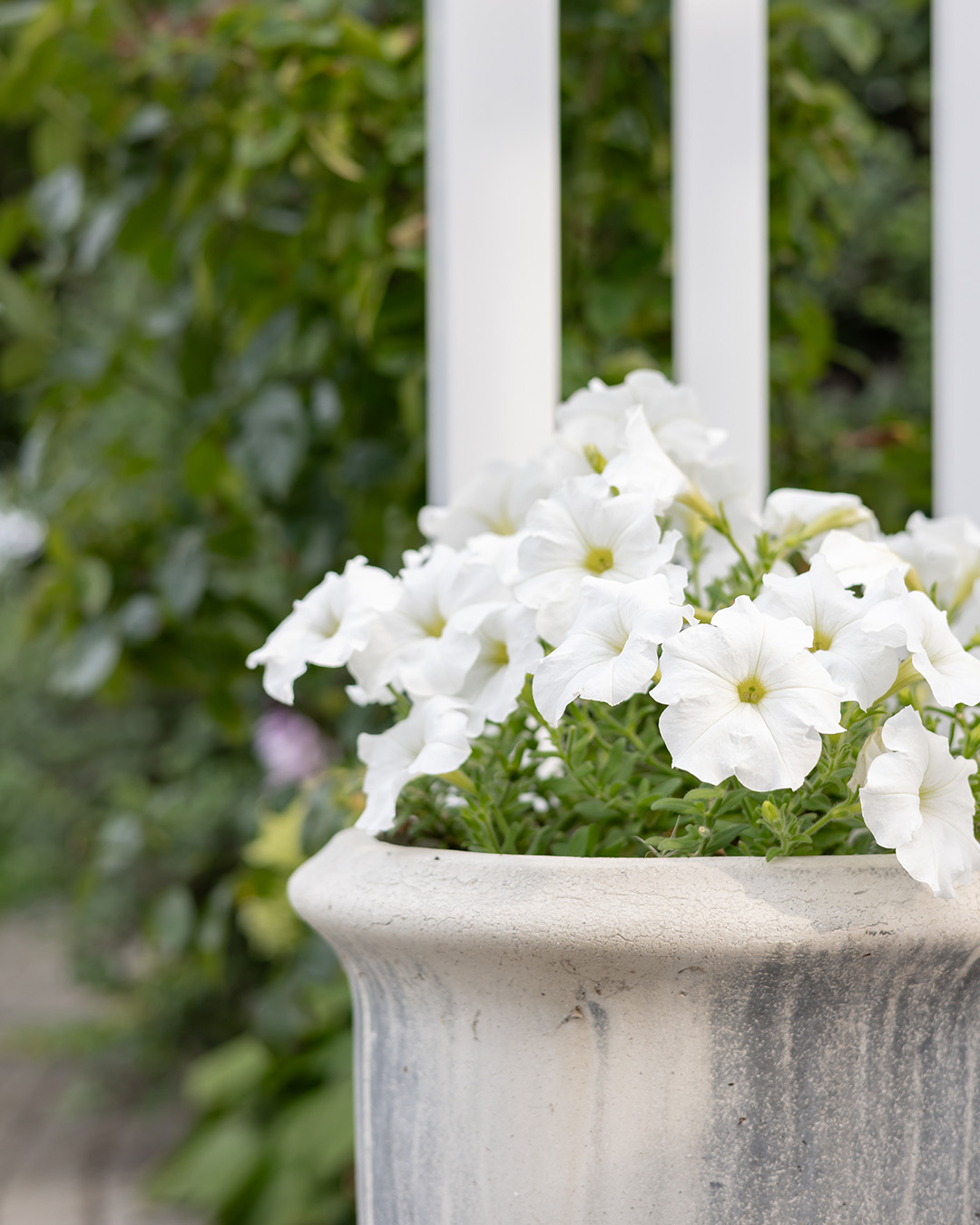
If you’ve ever wondered how people are still able to have beautiful, full planters of petunias well into the fall months, this is what they do!
Have you ever dealt with leggy petunias? What are your favourite petunia tricks?
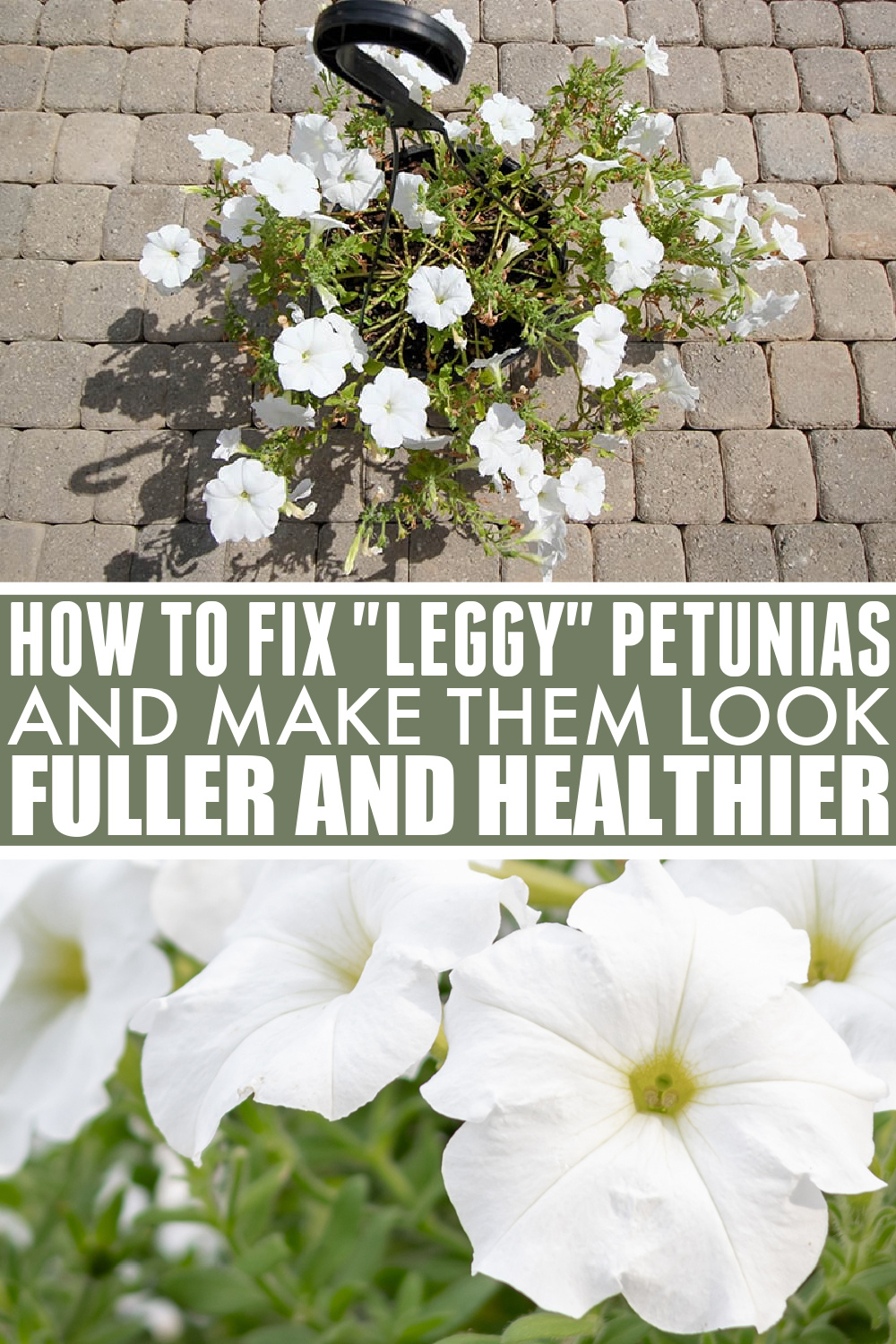
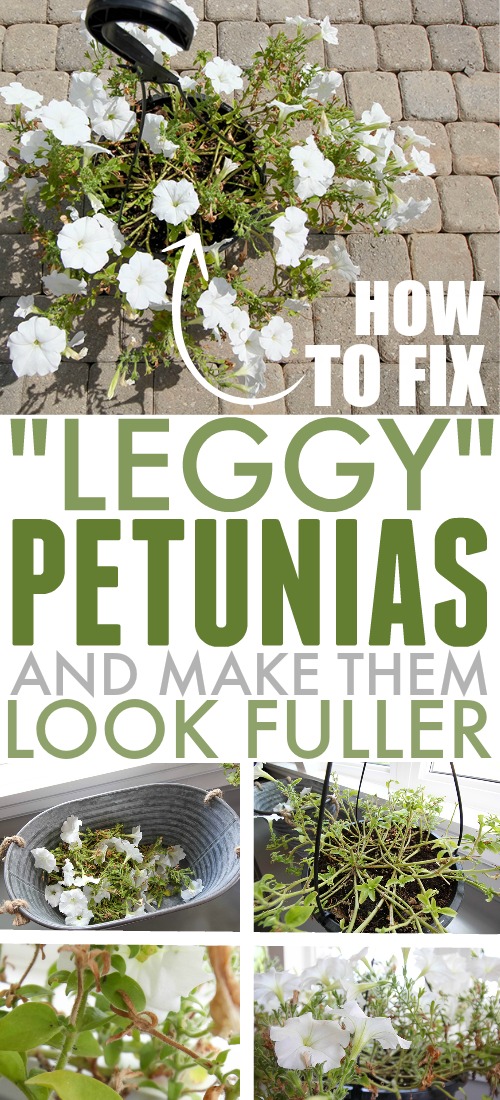
MORE IDEAS LIKE THIS
- How to Revive a Hydrangea
- How to Edge a Flower Bed
- How to Propagate Rose of Sharon
- Properly Cleaning Flower Pots
- How to Sharpen Pruning Shears
- How to Rescue a Completely Overgrown Garden
- The Creek Line House Gardening Archives
Courtenay Hartford is the author of creeklinehouse.com, a blog based on her adventures renovating a 120-year-old farmhouse in rural Ontario, Canada. On her blog, Courtenay shares interior design tips based on her own farmhouse and her work as founder and stylist of the interior photography firm Art & Spaces. She also writes about her farmhouse garden, plant-based recipes, family travel, and homekeeping best practices. Courtenay is the author of the book The Cleaning Ninja and has been featured in numerous magazines including Country Sampler Farmhouse Style, Better Homes and Gardens, Parents Magazine, Real Simple, and Our Homes.
